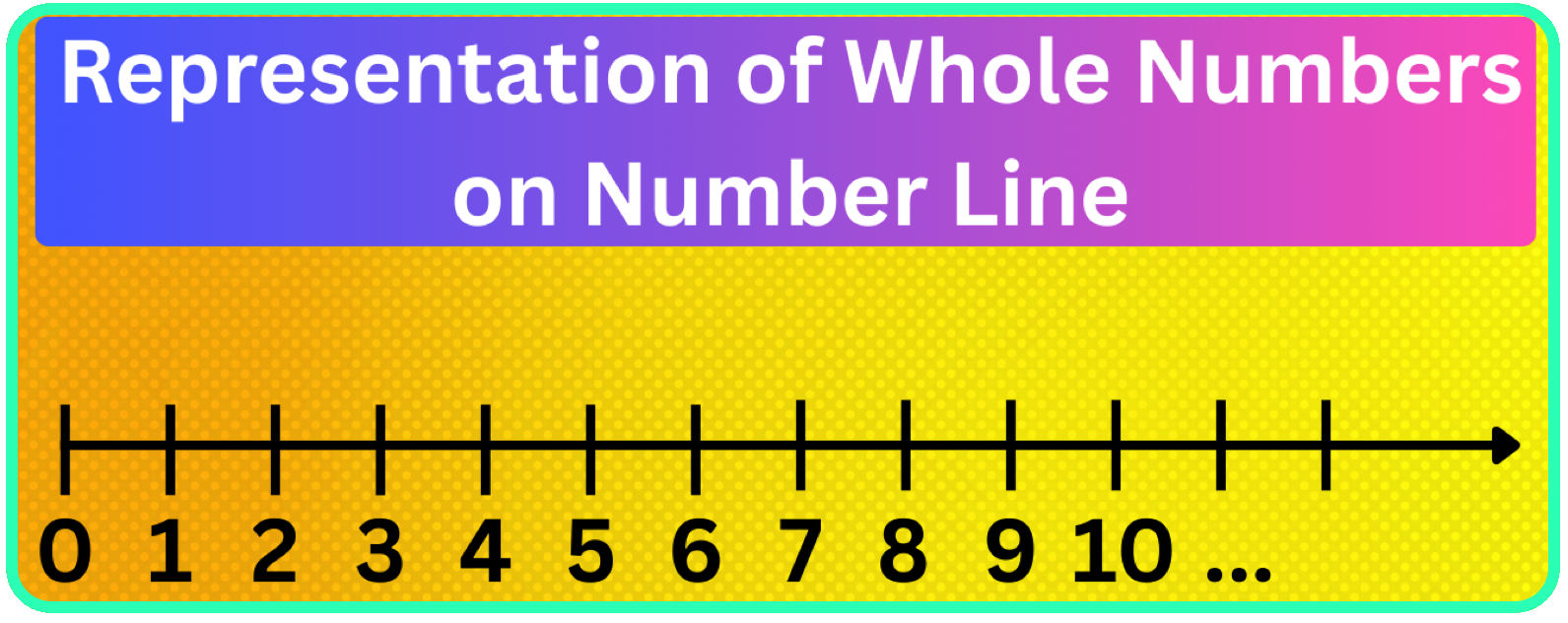Subscribe to our ▶️ YouTube channel 🔴 for the latest videos, updates, and tips.
Representation of Whole Numbers on Number Line
Numbers on a line is called the representation of whole numbers on number line.
The number line also helps us to compare two whole numbers, i.e., to decide which of the two given whole numbers is greater or smaller.
In order to represent whole numbers on a number line, we draw a straight line and mark a point O on it.
Starting from O, mark points A, B, C, D, E, F, G, H, etc. on the line at equal distances to the right of O.
Label the point O as 0.
Let us take OA = 1 unit. Then, AB = BC = CD = DE = 1 unit.
Now,
OB = OA + AB = (1 + 1) units = 2 units,
OC = OB + BC = (2 + 1) units = 3 units,
OD= OC + CD = (3 + 1) units = 4 units and so on.
Since O corresponds to the whole number 0, therefore, A, B, C, D, etc. correspond to the whole numbers 1, 2, 3, 4, etc. respectively.
The arrow marks on both ends of the line indicate that the number line extends indefinitely on both sides.
The following number line represents a whole number line on which whole numbers a represented.
The distance between two points (labelled 0 and 1) is called unit distance.
Step I: Draw a line and mark a point on it. Label the point as O.
Step II: Starting from O, mark off points A, B, C, D, E, F, G etc. to the right of O at equal intervals.
Taking OA = 1 unit, we get AB = BC = CD = DE = EF = FG = 1 unit
Now OB = OA + AB = (1 + 1) units = 2 units
OC = OA + AB + BC = (1 + 1 + 1) units = 3 units
OD = OA + AB + BC + CD = (1 + 1 + 1 + 1) units = 4 units and so on.
Since O represents the whole number zero, therefore A, B, C, D, E, F, G, etc. represent the whole numbers 1, 2, 3, 4, 5, 6, 7, etc., respectively.
So on the given number line, 1, 2, 3, 4, 5, 6, 7 ... are written against A, B, C, D, E, F, G..., respectively.
Similarly, every whole number can be represented by some point on the number line.
A number line representing whole numbers starts with zero and moves to the right infinitely. The whole numbers are marked at equal distances. The distance between two points is called unit distance.
The three dots (...) are read as "and so on".
From the above diagram, we observe that:
✅ There is no whole number on the left of 0 and every whole number on its right is greater than it
✅ A whole number on the right of a given whole number is greater than the given whole number.
For example: 8 > 7, 5 > 4, 2 > 1, etc.
✅ A whole number to the left of a given whole number is less than the given whole number.
For example: 2 < 3, 6 < 7, 8 < 9, etc.
Representation of Whole Numbers on Number Line
Division as The Inverse of Multiplication
From Representation of Whole Numbers on Number Line to HOME PAGE
Didn't find what you were looking for? Or want to know more information about Math Only Math. Use this Google Search to find what you need.








New! Comments
Have your say about what you just read! Leave me a comment in the box below. Ask a Question or Answer a Question.